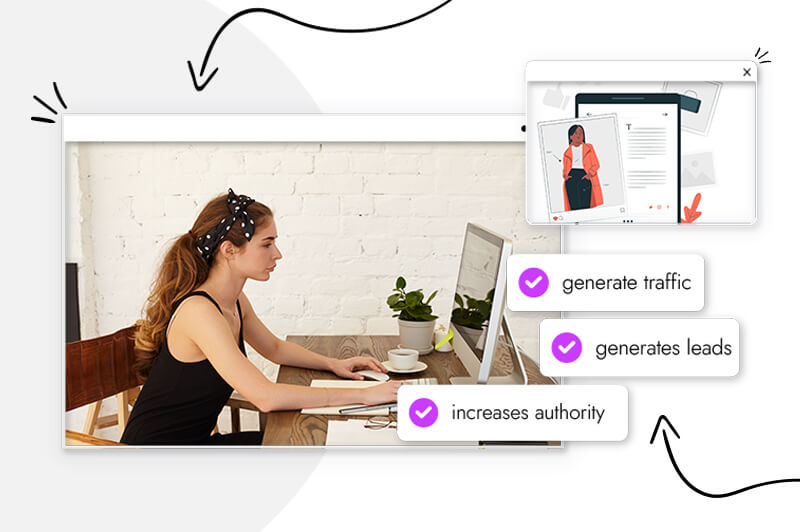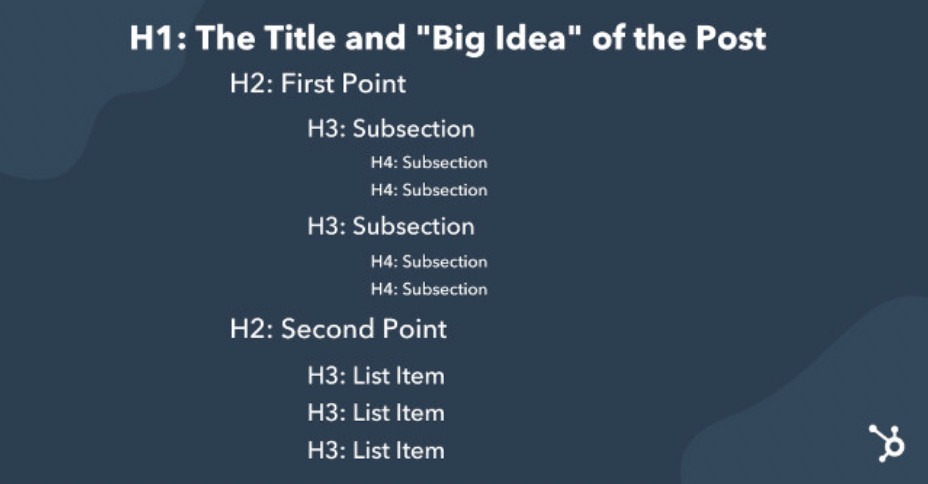
Blogging is more than just words on a screen. When done right, your business’s blog can bring in visitors and build relationships with your customers (you know, all that good stuff). While your blog should provide your customers with helpful information, it should also help create customer loyalty, converting visitors into buyers.
I know what you’re thinking, okay, this is all fine and dandy, Natasha, but how do I do it?
Um, do you think I would leave you hanging? I’m your girl! I want your blog to shine, and for that to happen, there are a few things you can do when writing a blog post. And that’s what this post is all about. So, let’s jump right in.

Before anything, you may be wondering, is a blog really that important? Yes, it is. I’m not playing around here either. Of course, you decide whether you want to invest in creating a blog for your business. But, having one on your website is a huge advantage and will boost your business.
A blog drives visitors to your website, giving your business that chance to create content that’s relevant to your customers. It positions your business as a thought leader in your industry by creating educational and valuable content. Once people recognize your blog as valuable, they’ll keep coming back.
Blogging not only gives visitors valuable information but also builds trust with your visitors. When customers trust your content, and the blog has relevant keywords, Google improves your visibility on the search results page – and that helps you attract new customers.

You want your blog to be seen – I totally get it. So, to help you improve your blog’s visibility, here are some basic tips you can use.
No matter what you’re writing about, your blog needs search engine optimization (SEO). SEO helps you rank on Google and get your content seen by your target audience, the group of people who are most likely to buy your product/service.
Here’s the thing, there are so many elements of SEO, and it’s a lot to take in. But right now, we’re gonna focus on the basics. Here’s some basic SEO you can add to your blog post.
Keywords: keywords are short phrases that people look up on search engines. For example, “organic candles” or “natural dog treats” are keywords. When you put those keywords into your blog post, you’re increasing the chances of your post showing up in the search results. To help find the right keywords, you can use SEO tools like:
Subheadings: Add your keywords to your subheadings. Subheadings not only break up your text and improve readability but influence search engines.
High-authority external links: link to a few sites considered leaders in your industry. For example, if you’re a health coach writing about a health-related topic, link websites like WebMD or Healthline.
Internal links: When posting a new blog, think about what other blog posts you have that can provide the reader with more value. For example, if you’re writing a post about “10 ways to heal your sore throat with honey,” you can link other relevant blog posts, like “how to stay healthy this winter” or “9 reasons why you have a sore throat.”
Here’s the thing, posting on your blog isn’t something you do every once in a while. It needs to be consistent. I’m not saying you need to write a 4,000-word post every day, but one 800-1000 word post every week or biweekly is a good starting point. This isn’t me telling you this – Google loves fresh content, and when it’s consistent, Google will rank your posts.
You know consistency is important, but if it’s going to sacrifice the quality of your posts, reduce the number of posts you create. Quality is key. If your posts don’t provide any value to the reader, they will leave your blog – and you don’t want that.
The longer a reader stays on your website, the better it is for you. Why? Because it increases the chances of the visitor turning into a customer, it tells Google that your blog post is valuable.
This one may seem a bit obvious, but you’d be surprised how many blog posts are full of huge, chunky paragraphs without subheadings. No one will read your blog post if it’s one giant text – it needs to look visually appealing.
What does that mean? When creating a blog post, remember the following:

The image above shows the layout for your blog. Though your blog may vary in topic, generally, this is the layout you should follow. Your title is heading 1 (H1), it indicates the main topic of the blog post. For example, if you’re writing a post titled the “10 Best Dog Shampoos,” you’re telling search engines (Google, Bing, Yahoo, etc.) and readers what the post is about.
Heading 2 (H2), heading 3 (H3), heading 4 (H4), etc. are subsections. Think of them as chapters in a book. They help break up the content and make it more accessible for readers.
Below is an example of what your headings will look like in a blog post.

You want your blog posts to get seen? Start posting them on social media. It’ll help get your business and posts out there. Depending on where your audience hangs out on social media, you can post on Twitter, LinkedIn, Facebook, Instagram, etc. By posting on social media, you’ll increase the odds of getting more eyes on your blog.
If you’re already posting on social media, but aren’t getting the results you want, maybe you’re not posting at the right time. Click here to find out the best times to post on social media.
Is your website mobile friendly? It’s something you don’t really think about but can greatly affect your blog.
If your website isn’t mobile-friendly, it can significantly affect your ranking on Google.
To find out if your website is mobile-friendly, click here.
You may think social media is enough to promote your blog, but email is still one of the best ways to get eyes on your business. Why? Because everyone checks their email. In fact, the average person checks their email 15 days per day. Promoting your blog with email marketing grows your business, builds relationships and boosts website traffic.
Whether you’re just starting your blog or are a seasoned blogger, guest blogging can help promote your business and improve your online visibility. Whether hosting a guest post or being featured on another website, you’ll gain more eyes on your blog.
To learn how to find guest blogging websites, click here.
Now you know why blogging is an important part of your business. But what’s the next step? If you already have a blog, do an overview and see if there’s anything you’re missing. For example, do you have keywords in your blog posts? Is your blog mobile-friendly?
If you don’t have a blog, consider starting one for your business. Make sure you use the tips above to help get the most out of your content.
This portion of our website is for informational purposes only. Tailor Brands is not a law firm, and none of the information on this website constitutes or is intended to convey legal advice. All statements, opinions, recommendations, and conclusions are solely the expression of the author and provided on an as-is basis. Accordingly, Tailor Brands is not responsible for the information and/or its accuracy or completeness. It also does not indicate any affiliation between Tailor Brands and any other brands, services or logos.
Products
Resources
©2025 Copyright Tailor Brands